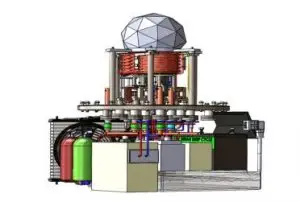 For the last three years, Randell Mills, the CEO of Brilliant Light Power, has been conducting semi-public presentations to invited audiences about the progress he and his colleagues have been making in developing an entirely new source of energy that one day might replace all existing sources of energy including fossil fuels, nuclear, and renewables. As Brilliant Light gets closer to completing the development of a working prototype of its SunCell, the company has begun to focus on plans for marketing the device around the world.
For the last three years, Randell Mills, the CEO of Brilliant Light Power, has been conducting semi-public presentations to invited audiences about the progress he and his colleagues have been making in developing an entirely new source of energy that one day might replace all existing sources of energy including fossil fuels, nuclear, and renewables. As Brilliant Light gets closer to completing the development of a working prototype of its SunCell, the company has begun to focus on plans for marketing the device around the world.
This week Mills and his Director of Business Development, Dominic Jones, took their presentation on the road to spread the details of the progress they are making to a wider audience. On Dec. 6 they gave a presentation to an invited audience in Washington, D.C. and later this month will give a presentation in London. It has only been six weeks since a similar update was given at Brilliant Light’s headquarters in Cranbury, NJ. While there appear to have been no significant developments in the last month, the presentation gave some new insights into the origin of the technology, the progress the company expects in the coming year, and important changes in marketing plans. All this, of course, assumes that reliably working prototypes will be completed on schedule in the next six months and that they will successfully complete testing by prospective partners of Brilliant Light who have expressed interest in building or distributing SunCells.
In late October, Mills and Brilliant Light had prototypes operating for hours at a time under manual control after having overcome the numerous technical challenges involved in igniting a plasma reaction that was capable of heating a carbide sphere to luminescence at 3,000 degrees Kelvin. In the last few weeks, efforts have been directed towards automating the device by attaching sensors, processors, and controls that will allow SunCells to operate unattended. Given the temperatures involved, managing the heat in a device that can produce megawatts of energy would seem a formidable challenge. However, Mills continues to express optimism that the engineering involved has been completed and that we would see a self-controlled, continuously-operating device within the next few months.
Leave a Reply